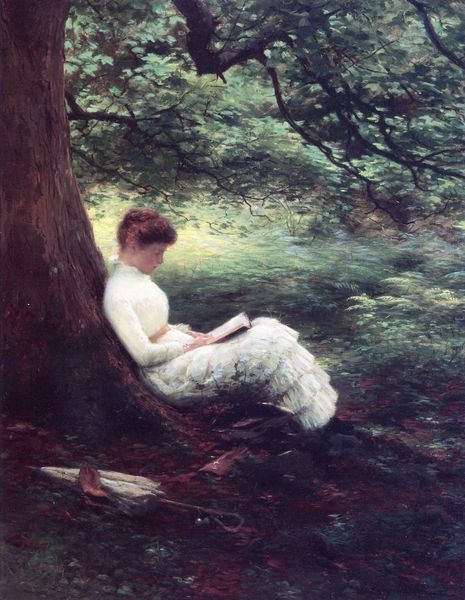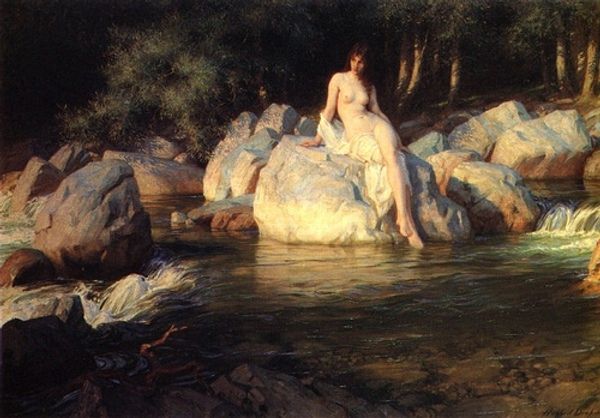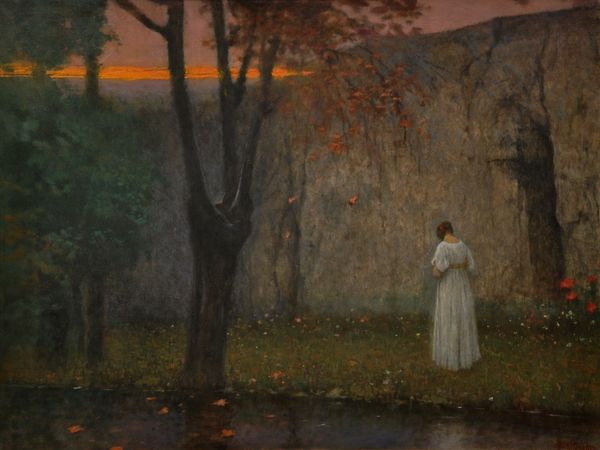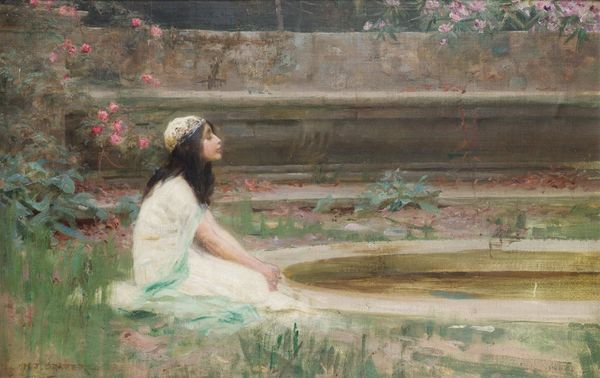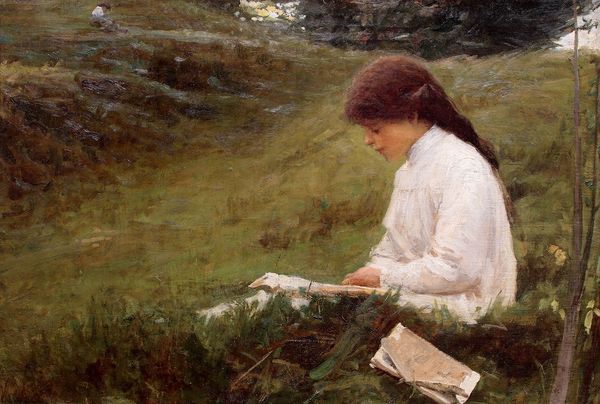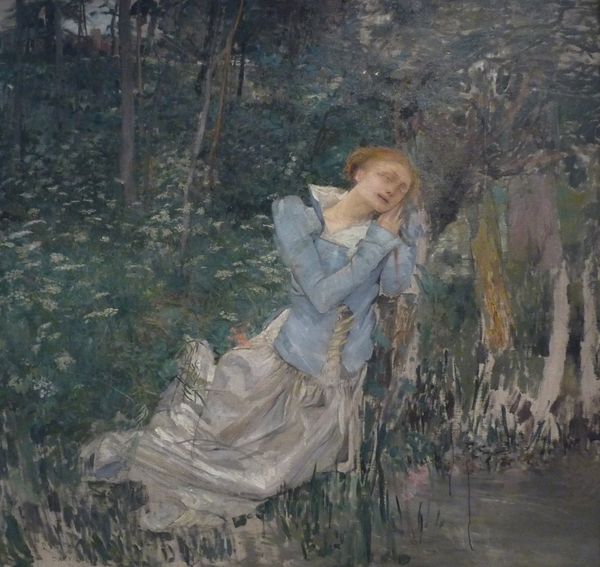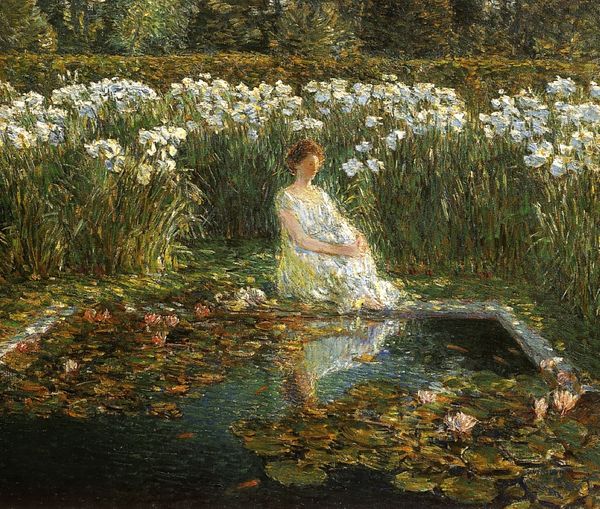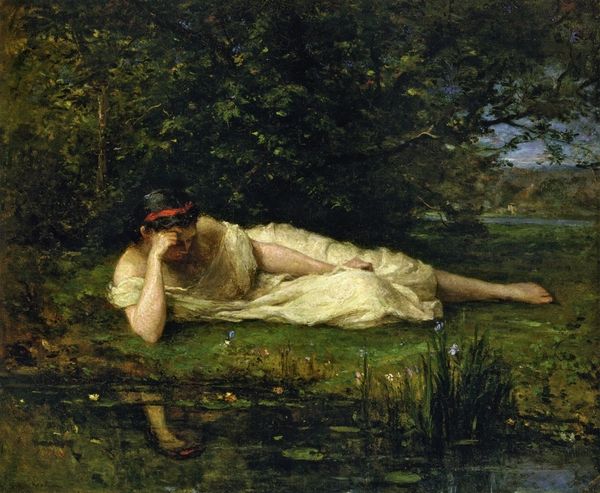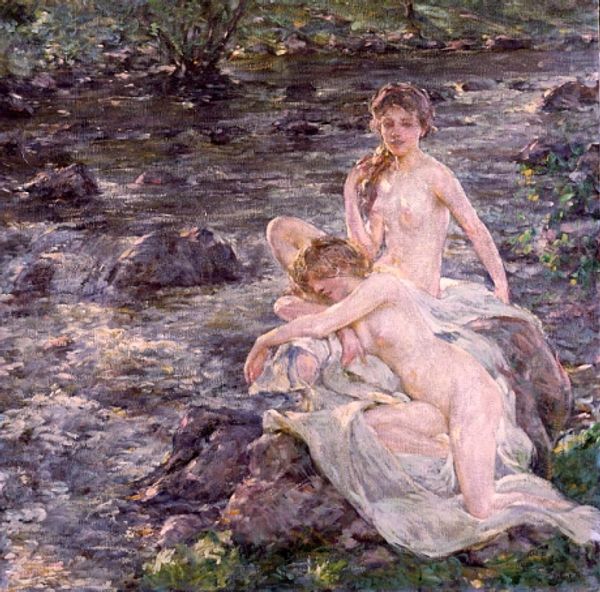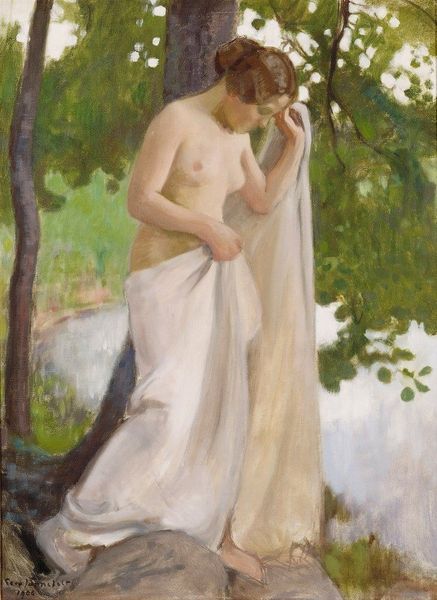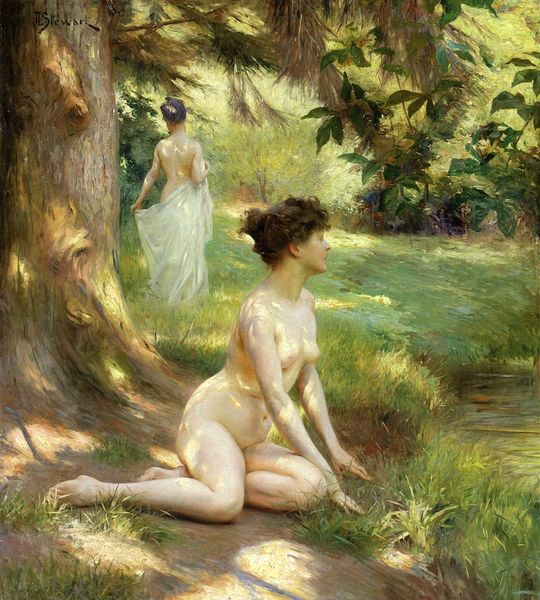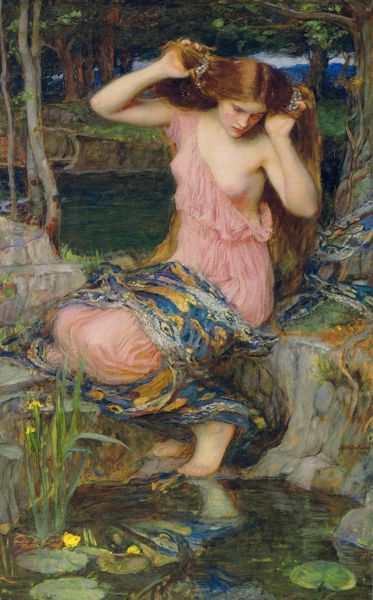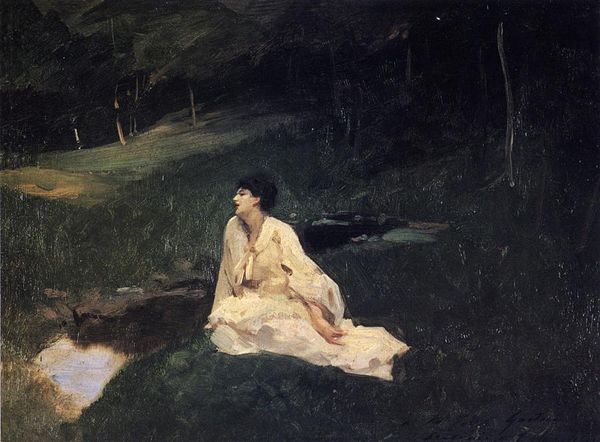
Dimensions: support: 445 x 546 mm
Copyright: CC-BY-NC-ND 4.0 DEED, Photo: Tate
Curator: Let’s consider Harry Watson’s watercolor, "Across the River," housed here at the Tate. Editor: It has such a quiet, contemplative mood—the cool blues and greens wash over you. Curator: Observe how Watson uses the river not merely as a physical barrier, but as a visual device. The diagonal thrust of the water leads the eye, establishing figure-ground relationships. Editor: Rivers in art often signify transitions, boundaries. Here, the woman gazes across, perhaps representing a yearning for something beyond her reach. It echoes the romanticism of the Pre-Raphaelites. Curator: Precisely. And note the nuanced layering of washes—the way he models form without reliance on sharp outlines. This allows for a certain ambiguity, a softness. Editor: Which only deepens the symbolism, doesn't it? She's not just by the river; she's part of the landscape, suspended in thought. Curator: True, that balance of formal elements and evocative imagery is what makes Watson's work so compelling. Editor: Yes, the visual language speaks of longing and the constant flow of time.
